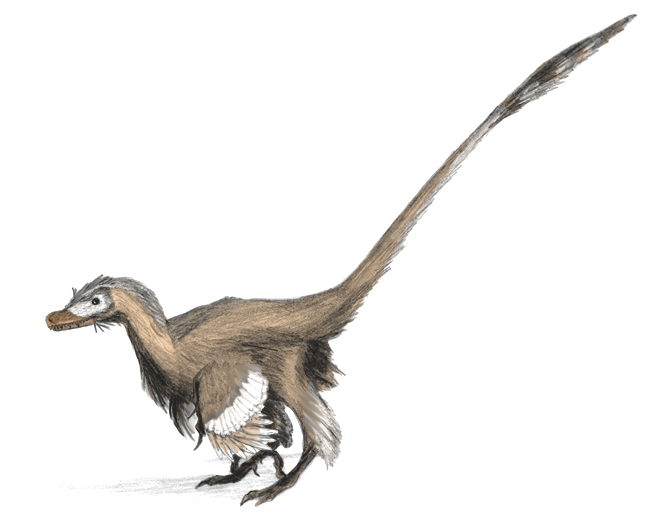A Guide to Choosing D&D Monsters for Your Next Campaign

From gelatinous oozes that spill out of subterranean lairs to hideous aliens and beasts to carnivorous plants that will make you distrust every bush and tree you pass, Dungeons & Dragons is not lacking in monster variety. This makes finding the right D&D monsters for each stage of your upcoming campaign a challenge. With so many blood-curdling and hair-raising choices, how is a malevolent Dungeon Master to choose? This guide breaks down the wide world of D&D Monsters by type and offers a few helpful guidelines for matching the right monsters to your campaign:
Types of Monsters
With so many creatures and shapeless entities to choose from, it’s useful to know the broad categories that all monsters fall into. As you’re planning your campaign, these 14 types will help you narrow in on what kind of monster you need.
Aberrations

Not of this world, these alien beings have innate magical abilities that come from their alien origins. Some are telepathic. Some create illusions. Some spit glowing loogies so bright they blind you. Either way, they’re grotesque and should only be thrown at mid to higher-level adventurers as most are too challenging for lower-level characters.
Some popular aberrations include:
- Beholder
- Elder Brain
- Aboleth
Beasts

This encompasses a broad category of animals and other nonhumanoid creatures. Being beasts, they’re mostly unintelligent and incapable of reason or speech (with some exceptions). Beyond that, little else unites the category, and beasts can range from ordinary cats to a whole Tyrannosaurus Rex. Some are even magic—mainly the mythical beasts like unicorns and ykcor (gargantuan flying squirrels).
Given how broad the category is, beasts can be used on campaigns at any skill level—and some can even be friendly.
Some popular beasts for encounters include:
- Giant Wolf Spider
- Giant Elk
- Velociraptor
Celestials

As the name implies, celestials are creatures who live in the sky. More specifically, in any of the upper planes of the world. While they are not deities or gods, they tend to serve them by traveling to the other planes (including our mortal realm) to deliver messages and carry out their bidding.
While most celestials align good, it’s not unheard of for an angel or Pegasus to break bad. When they do, the devastation they cause can be truly horrifying. If you’re going that route, though, make sure to come up with a killer backstory as to why the celestial went astray.
Here are some popular celestials to use in your next encounter:
- Unicorn
- Deva
- Planetar
Constructs

Constructs were made by someone with a goal in mind. Largely lacking free will, they are usually programmed to carry out a specific mission that will involve its creator in achieving their goal. Some are built with the capacity of independent thought or sentience while others are just mindlessly following protocol. These aren’t just machines, though. They include flesh and bone creatures like golems and intangible ghost ships or spirits as well as possessed objects like dolls or rugs.
Popular constructs include:
- Modrons
- Maruts
- Shield Guardian
- Animated Armor
Dragons

This type probably needs little explanation. They’re dragons: big, over-powered, magic reptilian creatures. There are tons of dragons. Gold dragons, blue dragons, cloud dragons, copper dragons, dust dragons—just heaps of dragons. Who would have guessed there’d be so many in a game with “dragons” in the title?
They’re often highly intelligent but some species are missing a few marbles. While most are too challenging for a low-level party, some of these less intelligent dragons can be adapted to a beginner party.
Here are some of the most popular dragons:
- Black Dragon
- Copper Dragon
- Tiamat
Elementals

These creatures live in the elemental planes and range from a suspiciously animate mass of their element (water, fire, etc.) to fully developed creatures that channel elemental power. Perhaps your party of adventurers is walking through a field on their way to the next town when the ground in front of them suddenly gets up and morphs into an angry badger made of rocks and dirt.
Perhaps after dozing off on the lumpy mattresses in the inn where your party booked rooms for the night, a dreamwraith taking the shape of each of their personal nightmares appears and starts wreaking havoc.
Popular elementals include:
- Elemental Myrmidon
- Djinn
- Leviathan
Fey

Fey are fairies—but in the more medieval sense of tricky, nefarious creatures that live in the faerie plane. Most often found in misty forests or quiet meadows at twilight, fey can be both whimsical and monstrous. Some are enchanting nymphs and sirens while others are hunched, decrepit-looking things with an unblinking stare and incomprehensible magic.
Some of the more popular fey creatures include:
- Sea Hag
- Dryads
- Pixies
- Goblins
Fiends

As fiendish as their name implies, these creatures call the lower planes home and tend to serve devils and other evil beings. These are essentially the wicked doppelgangers of celestials. While often having a lower to medium challenge ranking, fiends often travel in packs and have an insatiable thirst for death and destruction.
The most popular fiends include:
- Demon
- Hell Hound
- Rakshasa
Giants

Giants are, well, giant. They’re human-ish in form but much taller, much brawnier, and sometimes boasting an extra head or two. They tend to have low intelligence. Indeed, some are so stupid it’s an actual advantage—an adolescent ogre’s monumental stupidity makes them resistant to being charmed.
They range in challenge rating. Those adolescent ogres are good for low-level parties, but storm giants shouldn’t appear until your adventures reach higher levels.
Some oft-encountered giants include:
- Ogre
- Troll
- Stone Giant
- Frost Giant
Humanoids

Humanoids include any creature that is even vaguely bipedal and capable of speech. This includes all the playable character races—who can also be turned into some pretty cool villains as needed. However, there are also some monstrous humanoids that don’t belong to any of the playable races
It’s a diverse group with creatures of all challenge ratings. It also spans a broad range of abilities. Though magic only appears for humanoids who have specifically learned spellcasting as few are inherently magical.
Some popular humanoid monsters include:
- Archmage
- Drow
- Yuan-ti
Monstrosities

Monstrosities are the monsteriest of monsters that ever monstered. They’re abominable in form and cursed to a wretched, destructive existence. It’s a diverse category as it really serves as a catch-all for all the creatures that don’t fit neatly into any of the other categories. Some came into existence in mad experiments or magical conjuring gone awry while others began as something less horrifying but were then transformed into a monstrosity by a curse.
Some common monstrosities include:
- Minotaur
- Owlbear
- Yuan-ti
Oozes

In Dungeons & Dragons, everything can be evil—even a glob of slime. Oozes are gelatinous, rarely holding a fixed shape. As you’d probably imagine, they tend to live underground or in caves, seeping out of the earth to swallow victims into their shapeless, gooey insides.
For DMs with a playful approach to tormenting your adventurers, ooze is a delightful category that gives you the ability to attack your party with a literal bowl of pudding or to send your unwitting players on a path that leads past a swamp that turns out to be a sentient bog, bent on eating everything that gets close enough. Good times.
Some popular oozes include:
- Gray Ooze
- Black Pudding
- Ochre Jelly
Plants

If evil puddles of goo don’t pique your interest, perhaps a malevolent shrub is more your speed. Monstrous plants can be found everywhere in D&D and deal far more damage than an ordinary patch of poison ivy or insect-eating Venus fly trap.
From carnivorous sod (grass that eats people) to mu spores (a hyper intelligent fungus with tentacles, eyes, and toxic spore breath), plant monsters span all challenge ratings and can be found in all terrains and climates.
Some of the most commonly encountered plant monsters include:
- Treant
- Myconid
- Tree Giant
Undead

Anything that died but is still walking around is undead. What this means is that just about anything can become an undead if you’ve got the right necromancer or an unholy curse has been cast across a certain area. Being partially decomposed, they aren’t often unintelligent but still difficult to kill. After all, the whole dying thing didn’t seem to take the first time.
The undead can include both walking corpses and other physical creatures but also disembodied spirits and ghosts. Some of the more popular undead include:
- Zombies
- Vampires
- Ghosts
Tips for Choosing a Menacing Cast of Monsters for Your Next Campaign
There are a few ways to approach the important task of choosing monsters to attack your band of adventurers with. The best monsters fit into the world you’ve built for the campaign and are tailored to the strengths (and weaknesses) of each member of your party. Here are a few guidelines you can follow to make that happen:
Match the Monsters to the Campaign’s Setting and Theme
The best way to pick monsters is to match them to the setting and theme of the campaign you’re running. If you’re in a swampy area, a living bog would fit. If you’re high up in the mountains, cloud giants or air elementals would be a natural choice.
Match the Monsters to Your Adventuring Party
When you’re choosing which specific creature from a monster type to use and building the actual stat block (effectively, the monster’s character sheet), tailor it to your adventuring party. At the most basic level, that means the challenge rating matches your players’ skill levels. Monsters should take work and strategy to kill but it should never be impossible.
However, you can take this idea a step further and match the monsters to the characters’ personalities and backstories. If any character has a secret phobia or maybe made a few enemies in their past life, draw from that to pick monsters that could tie into your characters’ narratives. Maybe include something for everyone so they all feel personally attacked.
Pick Your BBEG First & Match Monsters to That
If you’re struggling to match the monsters to your adventurers, match them to the BBEG (the big, bad evil guy), aka, the final boss. An archmage on the quest for world domination, paired with some fiendish minions would be a natural match. Your adventurers can fend off the fiends as they hack and slash their way to the BBEG.
Choose a Healthy Range of Challenge Ratings
Of course, no other monster your party encounters before the BBEG should be as powerful as this final boss. But that doesn’t mean you should just keep throwing a bunch of low-level creatures at them.
Pick out a set of say, 3-5 monsters that are all within reason for your party but let each vary in difficulty. Use these to switch up the challenge level of any given encounter so that your players aren’t just predictably and steadily moving from easy to hard mode. Alternating between easier and harder encounters helps keep the suspense as your party won’t be able to guess what you have in store for them next.





